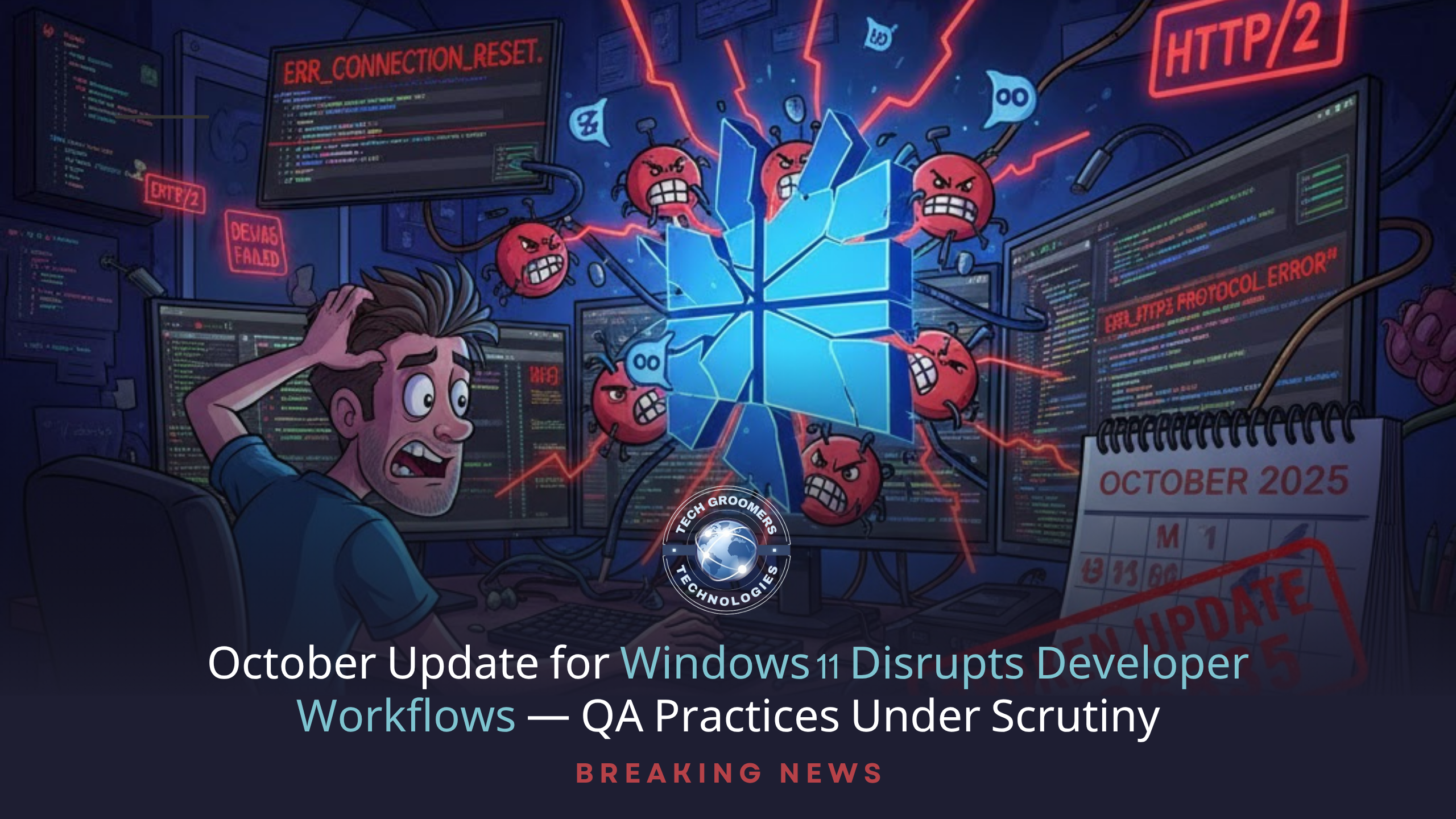Redmond, Washington / Global — A recent cumulative update for Windows 11 (versions 24H2 and 25H2) has caused major disruption in developer environments, raising fresh concerns over the speed of software release cycles and quality-assurance processes. Computerworld+2BleepingComputer+2
What Happened
- The update in question — KB5066835 — rolled out in October 2025, but users began reporting that local development services (e.g., websites or APIs running on
localhostor127.0.0.1) stopped working, or returned HTTP/2 negotiation errors. Gadget Hacks+2BleepingComputer+2 - Specific symptoms included: browsers returning “ERR_CONNECTION_RESET” or “ERR_HTTP2_PROTOCOL_ERROR” for localhost access, Visual Studio debugging failures (especially when using IIS-Express/HTTPListener), and enterprise apps dependent on local host communication breaking down. Windows Forum+1
- The issue was acknowledged by Microsoft via its Windows Release Health dashboard, which listed the fault under “IIS websites might fail to load – server-side applications that rely on HTTP.sys may experience issues with incoming connections.” Microsoft Learn
Why It Matters
- For developers and IT teams, the bug is especially disruptive because
localhostconnectivity is a foundational element of software development, testing, and debugging. Interruptions here ripple out to delayed builds, testing bottlenecks, and deployment risks. - The incident underscores challenges in balancing rapid update cadences with robust QA. As OS vendors push frequent updates to introduce features or improve security, the surface for potential regressions grows—especially in developer-tooling or environment scenarios.
- Enterprises that manage large fleets of developer or test machines are vulnerable: updates that break internal workflows can delay project timelines, increase support tickets and erode trust in patch-management regimes.
Microsoft’s Response & Mitigations
- Microsoft has indicated that a Known Issue Rollback (KIR) is in place for affected systems, and advised impacted users/developers to apply mitigations such as disabling HTTP/2 for localhost via registry settings, rolling back the update, or temporarily pausing further updates until the fix is stabilized. BleepingComputer
- For the immediate term, developers encountering the issue are being recommended to check the status of the update KB number, ensure their local web-server stacks are properly configured for fallback protocols, and follow Microsoft’s official guidance posted in the Windows 11 release-health bulletin. Microsoft Learn+1
Broader Implications
- This event may prompt enterprises and developers to reconsider their update-management strategies—whether to delay adoption of major OS changes until proof of stability is available, or to invest more in sandboxed environments where updates are pre-tested before hitting production machines.
- It may also push Microsoft and other platform providers to consider extended test-horizons for developer-centric workflows, given how critical these are for the ecosystem of apps and services that run on top of the OS.
- Finally, the “silent” nature of the bug (i.e., local developer services failing, rather than visible UI failures) shows how subtle regressions in system infrastructure can have outsized impact—often silently undermining productivity before being flagged.




Leave a Reply